Features of the combat use of Soviet aviation in the Manchurian operation
The main component of the Far Eastern military campaign of the Soviet Armed Forces in 1945 was the Manchurian strategic operation, carried out from August 9 to September 2 by troops of three fronts: Transbaikal, 1st and 2nd Far Eastern with support from the Pacific fleet and the Amur Flotilla. Mongolian troops took part in it. The 12th Air Army (VA) of the Marshal entered the Transbaikal Front aviation S.A. Khudyakova, in the 1st Far Eastern-9 VA Colonel General of Aviation I.M. Sokolov and in the 2nd Far Eastern -10 VA Colonel-General of Aviation P.F. Zhigareva. Planning and coordination of the aviation forces was carried out by the representative of the Aviation Headquarters, the commander of the Air Force, Chief Marshal of Aviation A.A. Novikov. Under him was the operational group of the headquarters of the Air Force.
The air armies of the Trans-Baikal and 1 Far Eastern fronts, which were assigned the main role in the operation, were strengthened by formations and units that had combat experience gained in battles with Nazi Germany. Two bomber corps (two divisions in each), a fighter, guards bomber and transport aviation divisions were redeployed to the Far East.
Soviet aviation had a more than twofold superiority over Japanese in the number of aircraft. The quality of domestic machines involved in the operation, such as the Yak-3, Yak-9, Yak-7B, La-7 fighters and Pe-2 bombers, Tu-2, Il-4 fighters, at least, was not inferior to Japanese aircraft . It is worth noting the fact that the Japanese Air Force did not have assault aircraft. The Soviet also had IL-2 and IL-10. Many of our pilots, commanders of regiments, divisions and corps had a great combat experience.
The Air Force was faced with the task of winning air supremacy and covering the factions of the front forces; support of ground troops in the breakthrough of fortified areas; attacking rail hubs, lines, echelons, disrupting the maneuver with the enemy’s operational reserves during our offensive; disruption of command and control; conducting aerial reconnaissance, providing headquarters ground troops with intelligence.
Fighting 12 BA had formed plans for the first five days of front-line operation, 10 BA - on the first day of operation, and 9 BA - for 18 days (preparatory stage of 5-7 days, period of destruction of defensive structures - 1 day, breakthrough period of enemy defenses and development success - 9-11 days). Detailed planning in the 9 air force was determined by the presence of fortified areas that could hamper the deployment of the main attack forces of the front in selected operational areas. To achieve surprise on the eve of the operation, the directive of the front commander of the aviation of this army in the first two stages were canceled. Parts and connections of the BA were to rise into the air at dawn on August 9.
The headquarters of the air and land armies jointly worked out interaction plans, single coded maps, radio signal and negotiation tables, and mutual identification signals. The basis of the interaction of air forces with ground forces during the Manchurian operation was to coordinate the efforts of the air armies with the main attack groups of the fronts in order to achieve the greatest results.
The experience of the defeat of fascist Germany testified that the interaction of the armed forces with the troops of the fronts should first of all be organized according to the principle of support, which allowed for centralized control and the massive use of aircraft. It is worth noting that the organization of the interaction of aviation forces with ground forces was largely determined by the characteristics of the basing and combat work of aviation in the specific conditions of the Far Eastern Theater. An increase in the composition, regrouping and concentration of the Air Force on the eve of the operation required the preparation and expansion of the airfield network.
The material and aerodrome technical support of aviation operations became more complicated due to the limited communications, especially during the offensive. The vastness of the theater, the desert-steppe and mountainous woodlands, the absence of human settlements and water supply sources, the harsh climatic conditions — all this made the work of the aviation rear significantly more difficult. Affected and understaffed personnel and necessary equipment areas of the airfield-based. That is why the Air Forces were reinforced by the Aviation Technical Division with the Supreme Command Headquarters. The delivery of ammunition, food, water and fuel was carried out centrally, at the direction of the heads of airfield-based areas. Inventories of all the necessary were created for conducting combat work during the 12-13 days of operation.
Heavy rains, fogs, thunderstorms, low clouds, desert and mountainous woodland, a limited number of landmarks made aviation flights more difficult. Therefore, the study of areas of the forthcoming hostilities in terms of navigation was extremely important. To provide navigation and interaction with the efforts of aviation and ground forces, a system of control and identification marks was created on the tops of the hills, 3-6 km from the border and 50-60 km from each other. The most important roads were marked with special signs. Before the operation, ground support aircraft moved to the leading airfields. Radio direction-finders and driving radio stations were located in the fighter-based areas, radio beacons in the bomber-based areas and light beacons in the IL-4 night-bombers based areas, on their flight routes, at base airfields, at control, identification and control checkpoints. Leading pilots from air regiments constantly based in the Far East were assigned to the regiments from the west. In squadrons, units and formations, the study of areas of deployment and combat operations was organized on maps, with overflight of the area on transport aircraft. The preparatory period for Far Eastern air connections lasted over 3 months. For connections arriving from the West theater, from 15 days to a month. These activities of the preparatory period ensured aviation success in carrying out its tasks.
Aerial reconnaissance was carried out not only by reconnaissance aviation regiments and squadrons, but also up to 25-30% of all forces of bomber, assault and fighter aircraft. Attackers and fighters were supposed to conduct tactical reconnaissance to a depth of 150 km and to observe the battlefield, bombers and reconnaissance units operational up to 320-450 km, long-range bombers strategic to 700 km.
A month before the start of the operation, the enemy’s territory was photographed to a depth of 30 km. This helped to reveal the system of enemy defenses, to map out the final breakthrough areas, to choose the places of forcing rivers, to specify the location of fortifications and structures, fire weapons and reserves. Since the beginning of the operation, the 12 VA aircraft conducted aerial reconnaissance, for which the needs were carried out daily for more than 500 sorties. She was led on a wide front, over 1500 km. Initially, reconnaissance flights were conducted at high altitudes, from 5000 to 6000 m, and later - at medium altitudes, from 1000 to 1500 m. On average, all air armies spent on these tasks 2-3 sorties more times than during offensive operations , in the West theater. Intelligence was carried out in directions and areas (lanes) by aerial photography and visually.
The transfer of aircraft to advanced airfields was carried out in small groups. The flight was made at low altitudes with full radio silence, to increase stealth. This ensured the surprise use of large aviation forces.
The most instructive operational interaction of the air forces with the troops was carried out in the Trans-Baikal Front. Due to the significant gap tank formations from combined-arms armies leading an offensive on separated parallel operational directions, only aviation could provide continuous support for the advancing formations to the entire depth, operations. The control of the air divisions supporting the tank army was carried out by the operational group. Communication was provided by a mobile radio center. For long-range guidance of aircraft, it was attached to a radar. The fighter aviation division had radars for guiding aircraft to air targets. In each regiment of fighters, to organize short-range guidance posts, aircraft controllers with radio stations were allocated.
It should be noted and omissions in the planning of interaction. So, to support the actions of the ground forces in the auxiliary directions of the front (Hailar and Kalgan), one bomber division and a regiment of fighters were allocated. The maneuver airfields for the air units and formations that interacted with the 6 tank army were not quite successful. It was not planned to inflict counterattacks by joint actions of aircraft and tanks, did not envisage the actions of bombers during the first days of the operation in the interests of the combined arms army leading the offensive on the left flank of the tank army. All these shortcomings could lead to a decrease in the rates of advance of the front troops, therefore, the interaction plans were refined and these shortcomings were eliminated with the start of the operation.
Commander of the Air Force of the Far East A.A. Novikov with his field headquarters was in the 12 VA action area, in the main direction. The management of 9 and 10 of the Air Force and the Air Force of the Pacific Fleet was carried out through the headquarters of the Air Force of the Far East. With the withdrawal of our troops on the Manchurian Plain and until the end of the military campaign, control was carried out through the Air Force field headquarters from Khabarovsk.
The forces of all three fronts launched an offensive on the night of August 9. Artillery training, it was decided not to carry out to achieve surprise. The troops immediately seized a large number of strongholds and fortifications of the enemy.
The success of the ground forces offensive in the main strategic directions was promoted by the 9 and 12 BA aviation. 76 IL-4 bombarded the military facilities of Harbin and Changchun. In the morning, with the aim to paralyze the work of communications, to prohibit the maneuver by reserves, to disrupt the control of the bomber aircraft of these air armies and the Pacific Fleet Air Force struck two massive blows. The first involved 347 bombers under the cover of fighters, in the second - 139 bombers.
In the afternoon of August 9, the 10 VA formations were supported by troops of the 2 Far Eastern Front, which forced water barriers. On the third day of the operation, forward detachments of the Trans-Baikal Front overcame a vast desert, and reached the spurs of Big Khingan. Thanks to the active actions of 12 VA, the Japanese command was unable to timely tighten the reserves and deploy the defense on the passes of the ridge. The tank army, having overcome the Great Khingan in difficult conditions of a rough road, due to a shortage of fuel already on the 3-4-th day of the operation was forced to stop and linger for almost two days to tighten the rear lines.
By the decision of the front commander, the supply of the tank army was carried out by transport aviation, its aircraft transferred more than 2450 tons of fuel and lubricants and up to 172 tons of ammunition. Every day, up to hundreds of Lee-2 and SI-47 transports were delivered, which made up to 160-170 departures per day. The length of the routes ranged from 400-500 km to 1000-1500 km, of which 200-300 km passed over the Great Khingan ridge, covered mostly by fog and low clouds. There were no airfields and convenient sites in case of a forced landing. Flights were made to points with which radio communication has not yet been established, and the airfields were not known to the flight crews. Under these conditions, reconnaissance groups that were specially created and followed with the advance units of the ground forces successfully carried out their tasks. Each group had 1-2 vehicles, a radio station, mine detectors and the necessary tools. The groups conducted reconnaissance of the area, sought grounds for creating airfields, established contact with transport aircraft and ensured their landing.
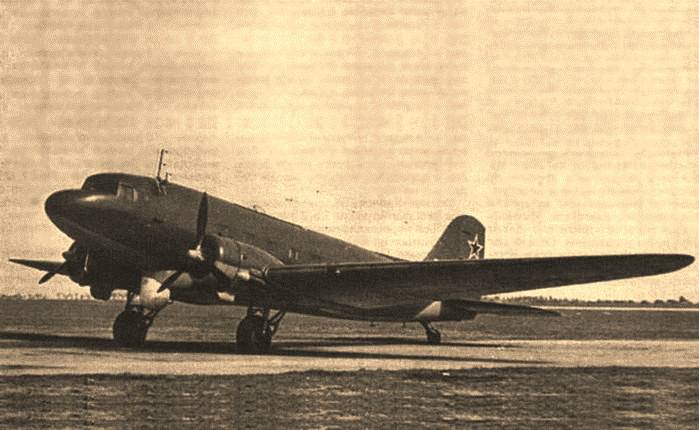
It was not necessary to conquer air supremacy: on August 9 it was found that the Japanese, deciding to save aircraft for the defense of the islands of Japan, redeployed it almost completely to the airfields of South Korea and the metropolis. Therefore, all the efforts of the aviation of the air armies were sent to support the ground forces of the fronts, which certainly contributed to the success of the operation.
The assault and fighter aircraft 9 VA actively supported the troops of the front. His shock groups on the two main areas of operations in five days advanced by 40-100 km. Aviation representatives, who had powerful radio stations, often helped the commanders of divisions of ground forces, who had taken the lead and lost contact, to establish it with the command posts of their armies.
Given the successful actions of the Trans-Baikal and 1 of the Far Eastern fronts, the Commander-in-Chief of the Armed Forces of the Far East, A.M. Vasilevsky gave the order to deploy the offensive of the 2 of the Far Eastern Front, with active aviation support. Within a week, his troops routed several enemy units and successfully advanced deep into Manchuria. Due to the large distance from the airfields of attack aircraft, as a result of the rapid attack, support for tank formations of the Trans-Baikal Front was decided by the Chief Air Marshal A.A. Novikova, was assigned to the 12 BA bomber aircraft.
Concentrated strikes of attack aircraft and bombers proved to be effective. For the destruction of the 25-th Far Eastern Front blocked by the 1-th Army of the resistance units of the Duninsky Fortified Region, twelve nines of the IL-4 19 bomber air corps struck a concentrated blow. Bombing was carried out from the heights of the 600-1000 m serially on the lead in two rounds. Using the result of an air strike, our troops captured the Duninsk fortified area. Centralized aviation control allowed the air force commanders to concentrate on where it was most important. Properly used one of the main properties of aviation - its high mobility.
The interaction of 9 BA and the troops of the 1 of the Far Eastern Front was at a high level. There were cases when attack aircraft and bombers supporting one army were re-targeted to support another. The concentration of the efforts of the air army, in terms of the tasks of the offensive operation and the targets, ensured the rapid rates of advance of the formations of the front. In the course of supporting the troops in the directions of the main attacks, a continuous impact was made on the enemy. This continuity was achieved by the fact that attack aircraft operated in echelon and carried out five to seven attacks on each plane, and the bombers systematically struck at communications. Aviation was forced to conduct combat operations in difficult weather conditions for almost the entire operation. When group flights were excluded, due to bad weather conditions, the fighters and attack aircraft in pairs conducted reconnaissance, simultaneously attacking the most important enemy targets.
The ground forces skillfully used colored smoke bombs, rockets, exploding artillery shells, tracer bullets, and cloths to target aviation. Aircraft 9 and 10 BA, in order to support the advancing Soviet troops and strikes on fortifications, made respectively 76% and 72% of sorties made by attack aircraft.
The success of the operation of the Trans-Baikal Front depended significantly on whether the Japanese managed to take passes through the Great Khingan with their own reserves. Therefore, for the first five days of the operation, all the railway stations in the Uchagou-Taonan and Hai-Lar-Zhalantun sections were hit by Tu-2 and Pe-2, which operated on 27-68 airplanes. Total 12 BA bombers produced for this purpose 85% of all sorties. Unlike the 12 BA, the 1 Air Force of the Far Eastern Front used most of the attack and fighter aircraft, which did not destroy the railway stations, but blocked the movement by destroying the trains and locomotives, as well as the incoming and outgoing railway arrows.
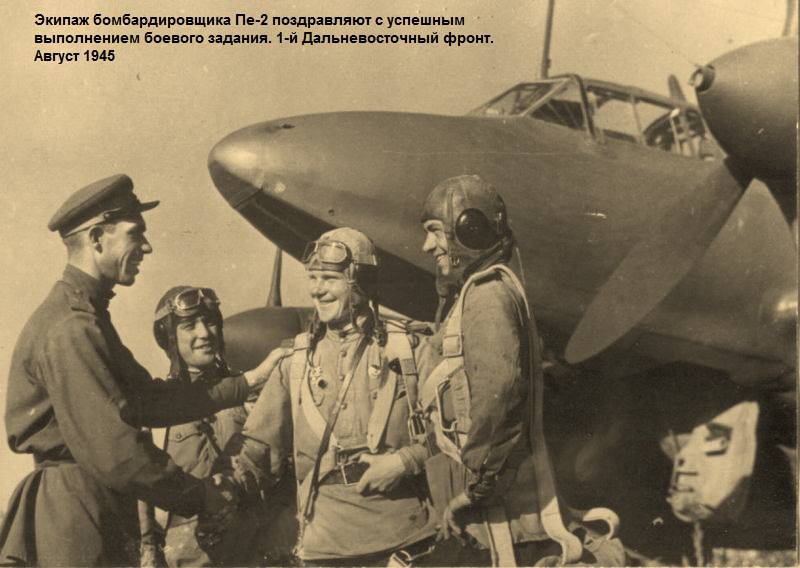
A huge amount of work on the preparation of airfields, followed by the leading offensive troops of the fronts, did the bodies of the rear of the air armies. For example, four days in 12 BA 7 aeronautics were prepared. And from 9 to 22 in August, 27 of new aerodromes was built and 13 was restored, and in 9 and 10 BA, 16 and 20 were restored respectively.
With the withdrawal of the forces of the Trans-Baikal Front to the central regions of Manchuria, opportunities were created for surrounding the entire Japanese group. Airborne assault forces, ranging from 50 to 500 fighters, were landed in enemy rear areas of large cities and airfield sites, which contributed to an increase in the rate of attack and played a significant role in the final encirclement and rout of the Kwantung Army.
Together with the landing troops, as a rule, aviation representatives with radio stations landed. They constantly kept in touch with the command of the Air Force and with their air divisions. It was possible to call up air units to support the landing forces. On the landing, cover and support of the landing was made about 5400 sorties. The aircraft transported almost 16,5 thousand people, 2776 tons of fuel, 550 tons of ammunition and 1500 tons of other goods. About 30% of the sorties the transport aircraft made, conducting reconnaissance in the interests of airborne assault forces. During the operation, the transport aviation and communication aviation of three VA made 7650 combat sorties (9-I BA - 2329, 10-I-1323 and 12-I-3998).
It took ten days to crush the Kwantung Army. For such a short period, the Air Force carried out about 18 thousand combat missions (together with the Air Force of the Pacific Fleet more than 22 thousand). Quantitatively, they were distributed as follows: up to 44% - to support the Soviet troops and fight enemy reserves; up to 25% - for aerial reconnaissance; about 30% - in the interests of landings, transportation and communications and control.
For strikes on Japanese airfields, our Air Force spent only 94 combat sorties (about 0,9%). The reason for this was that parts of enemy aircraft were diverted to airfields which were out of reach of our front bombers. In order to cover ground forces and escort aircraft of other types of aircraft, fighters completed more than 4200 sorties. The separation of such powerful fighter forces for the solution of the assigned tasks was clearly redundant, since enemy aircraft hardly acted.
During the Manchurian operation, the Air Force carried out what was not always possible to do during the battles in the western theater of war: to disorganize railway transportation and successfully destroy enemy reserves. As a result, the Japanese command could only partially use railway communications to maneuver, the battle areas were isolated from the supply of fresh forces, the Japanese were unable to remove material assets and withdraw their troops from the attacks of the advancing Soviet forces.
The experience of the Manchurian operation showed that with the rapid onset of our troops, when the situation was changing especially rapidly, air reconnaissance became not only one of the main, but sometimes the only means of obtaining reliable information about enemy forces and their intentions in a short time. The fighting of the Soviet aviation in the Manchurian strategic operation confirmed that the principle of support allowed the maximum use of maneuverable qualities of aviation, made it possible to centrally control, and massively used air links in the directions of the main attacks of the fronts. The disunity of all three strategic areas of the theater required the organization and implementation of the closest interaction of aviation with ground forces. Despite the enormous scope of the hostilities, the management of the air forces during the preparation of the operation and, partly during its implementation, was carried out centrally. The main means of communication were radio and wire communication lines, as well as airplanes of aviation armies of the air armies. In conclusion, it is worth noting that the combat operations of the ground forces and the air force in the Manchurian operation, in their spatial scope and swiftness of the offensive, the achievement of the main strategic goals at the beginning of the war, are unparalleled throughout the Second World War.
Sources:
The team of authors. Fighting aviation during the defeat of the Kwantung Army of Japan // Soviet air forces in the Great Patriotic War 1941-1945. M .: Voenizdat, 1968. C. 422-447.
Ivanov S. Preparing and delivering a surprise first strike with the opening of a new strategic front (from the experience of the campaign of the Soviet armed forces in the Far East in 1945) // The initial period of the war (from the experience of the first campaigns and operations of the Second World War). M .: Voenizdat, 1974. C.323-326.
Bryukhovsky G. The use of aviation in the Manchurian operation // VIZH. 1978. No.9. C. 17-23.
Kozhevnikov M. In the Far East // Command and Headquarters of the Soviet Army Air Force in the Great Patriotic War 1941-1945. M .: Science, 1977. C.142-156.
Kharitonov S. Soviet Aviation in the Manchurian Operation // Bulletin of Air Defense. 1989. No.3. C.48-52.
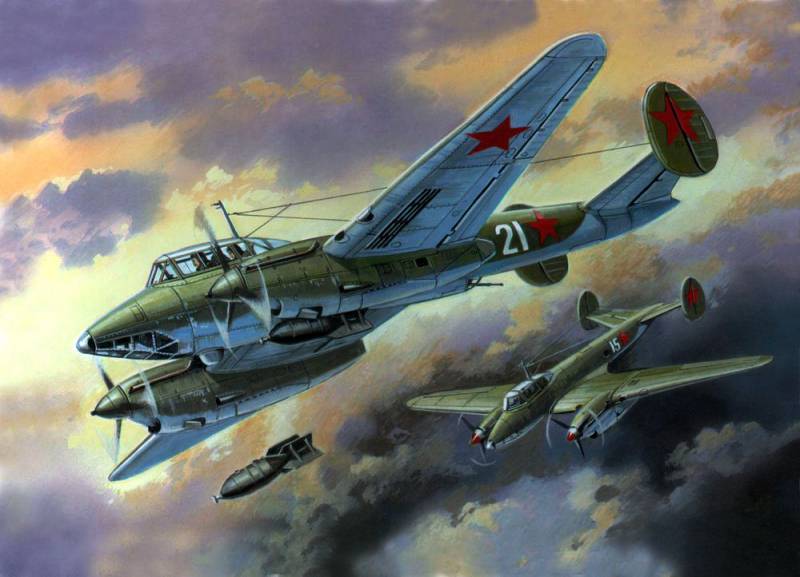
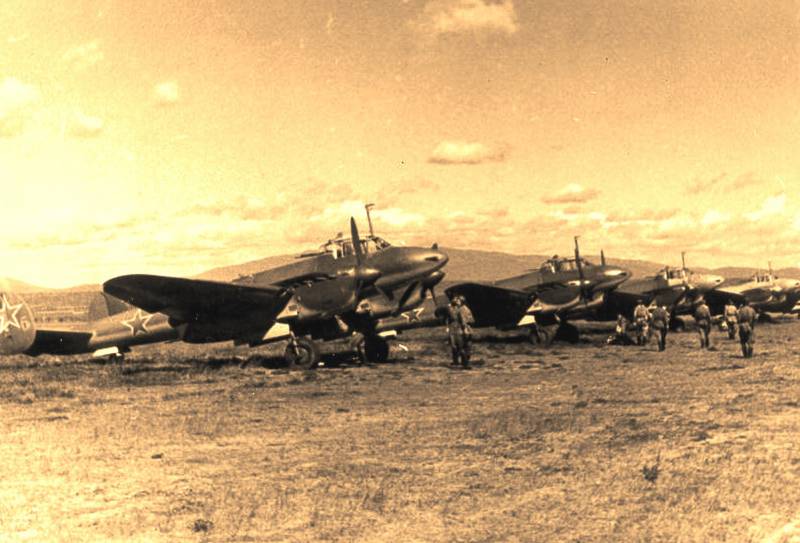
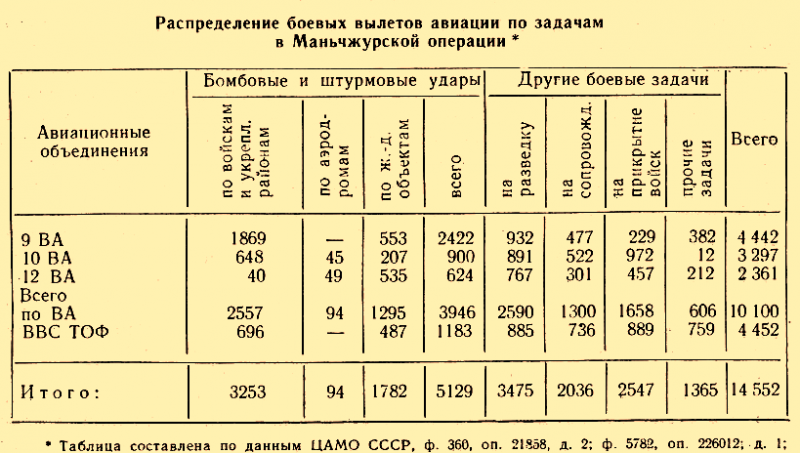
Information